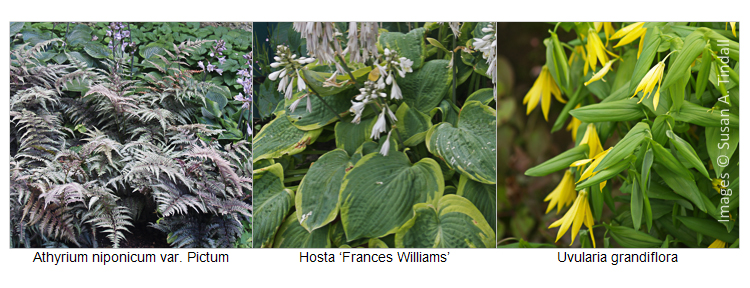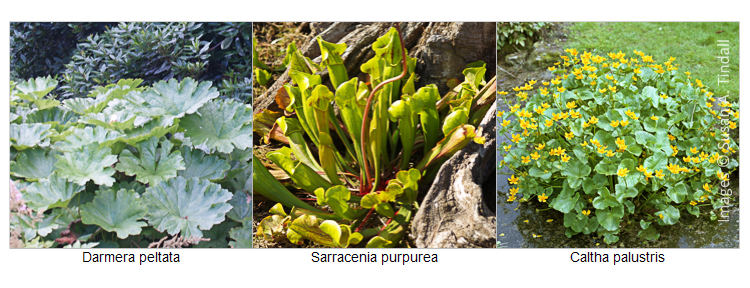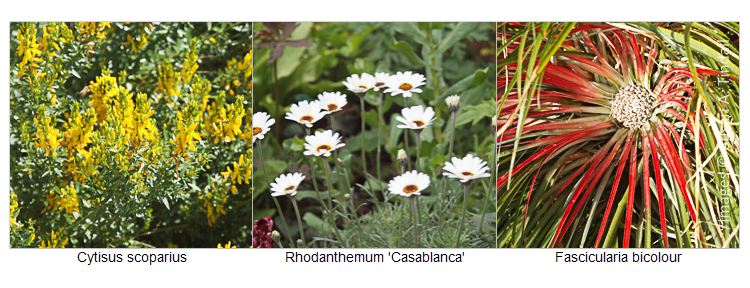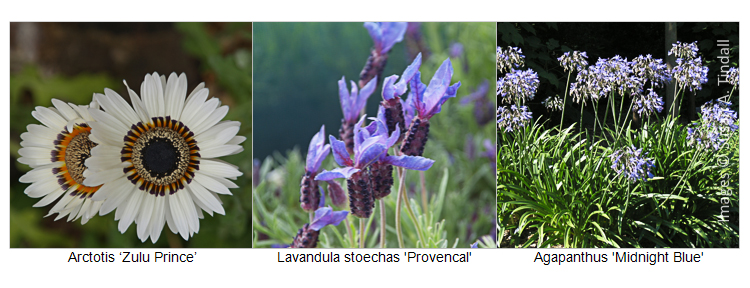Light
The different areas of any garden will receive variable amounts of light, so some may be largely sunny while others are in shade for a large part of the day. Most plants do well in full or part shade. A few are adapted to bright and generally dry conditions or wet and boggy places. Such plants only achieve their full potential when placed in the right environment.
In some plants their flowers only open in sunshine and with others their stems become longer and the whole plant leans towards the light. To enjoy these special sunshine plants choose the very sunniest parts of the garden to display them to perfection and relish their often bright flowers. Examples include the sumptuous, generally blue or mauve globes of agapanthus such as Agapanthus ‘Midnight Blue’ and the brilliant daisy flowers of Arctotis and Gazania that are lovely when baked in sunshine. Try the voluptuous Arctotis ‘Zulu Prince’. In sunny gardens lavenders can reign supreme and epitomize the dreamy days of summer. French lavenders always add an exotic touch, an example being Lavandula stoechas subsp. stoechas ‘Provencal’.
Plants that do best in partly or fully shaded positions often have large succulent leaves or foliage that can become scorched if positioned in sunshine. These plants contribute to a garden that has a cool, lush feel, creating a garden that soothes rather than excites the senses. Many hostas belong to this group including the classic Hosta ‘Frances Williams’, so do the delicate, aristocratic painted ferns such as Athyrium niponicum var. Pictum. In addition plants that naturally grow in woodlands have their season of beauty in spring sunlight, before being shaded by the foliage of deciduous trees. Such woodland plants often have an enchantment all their own, an example being the lovely Uvularia Grandiflora and some of the less common epimedium such as Epimedium franchettii ‘Brimstone Butterfly’ with its delicate dancing flowers.

Moisture
Light and moisture in the soil often go together. The brightest parts of the garden are often the driest while shadier parts generally retain moisture. There are a couple of exceptions to this rule – the base of walls can be extremely dry and some larger plants take a good deal of moisture from the soil. Once you understand your garden you will quickly pick out those areas that need more or less watering in dry periods.
Permanently wet areas are a great asset if you choose plants that like bog gardens. For example the kingcup Caltha palustris with its golden spring flowers. For foliage interest the umbrella plant Darmera peltata has handsome leaves all summer through followed by autumn colour. For something different ‘pitcher plants’ such as Sarracenia purpurea could be a distinctive choice.

A few plants need dry conditions to thrive. These include the charming Moroccan daisies such as Rhodanthemum ‘Casablanca’ (African Daisy Series) and the curious giant bromeliad Fascicularia bicolour, and members of the broom family such as Cytisus scoparius. The sun-loving plants mentioned earlier enjoy dry conditions.

It is well worth looking at the light and moisture requirements of your plants and matching these to similar conditions in your garden. Plants that are happy perform better and do credit to your judgement and artistry.
Enjoy!
Susan A. Tindall

